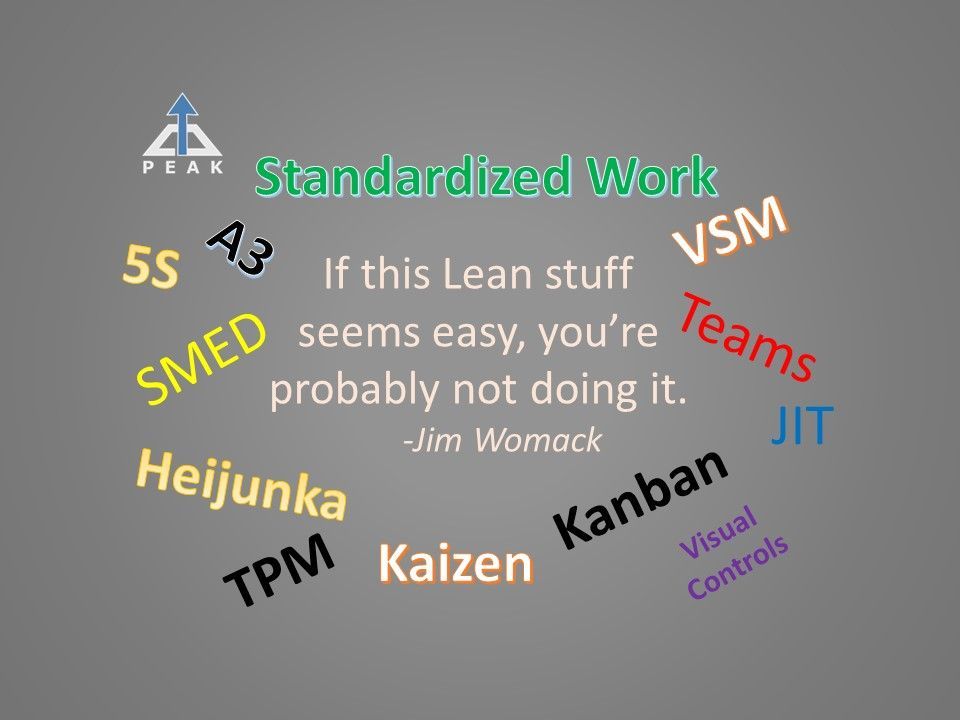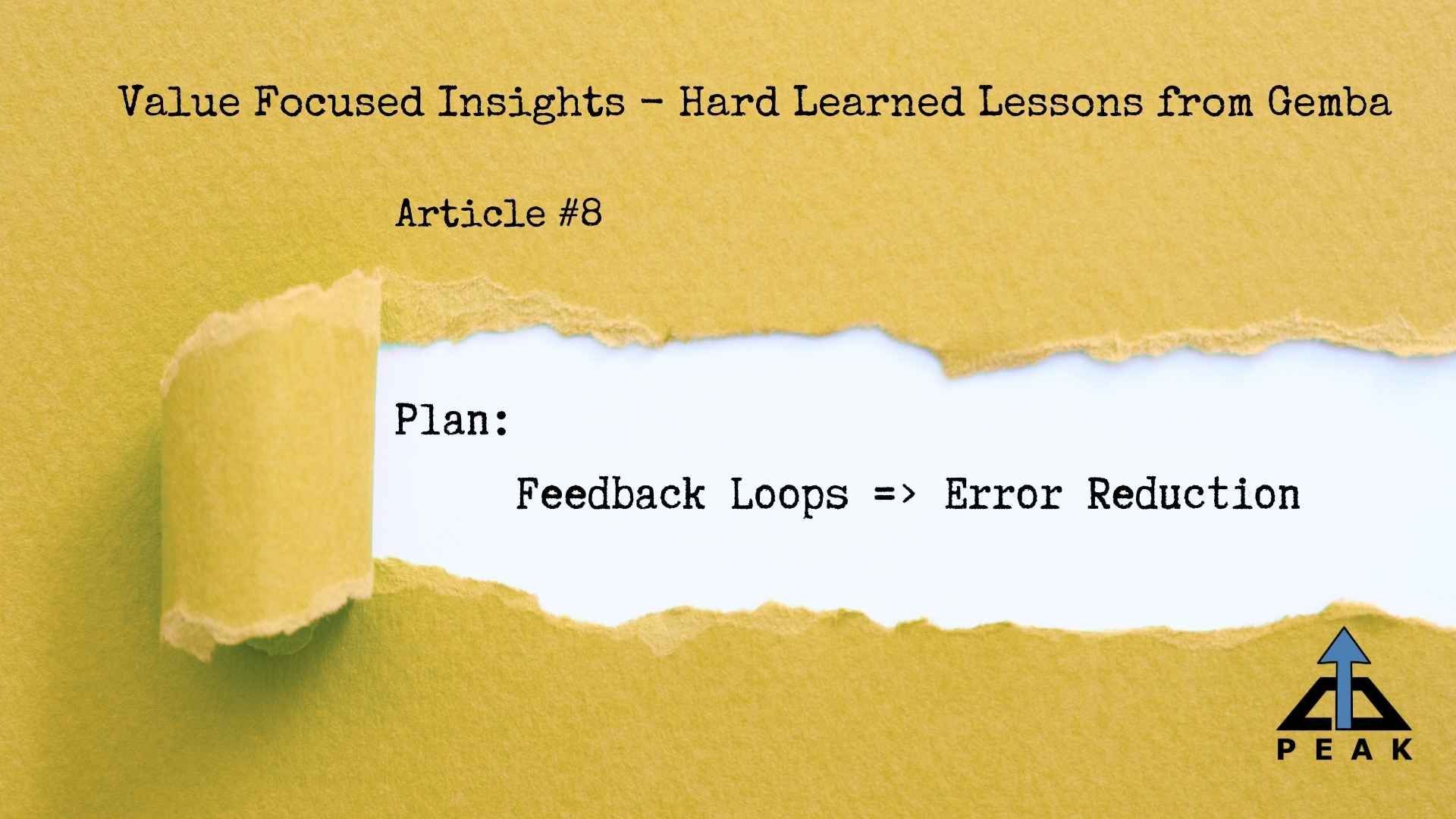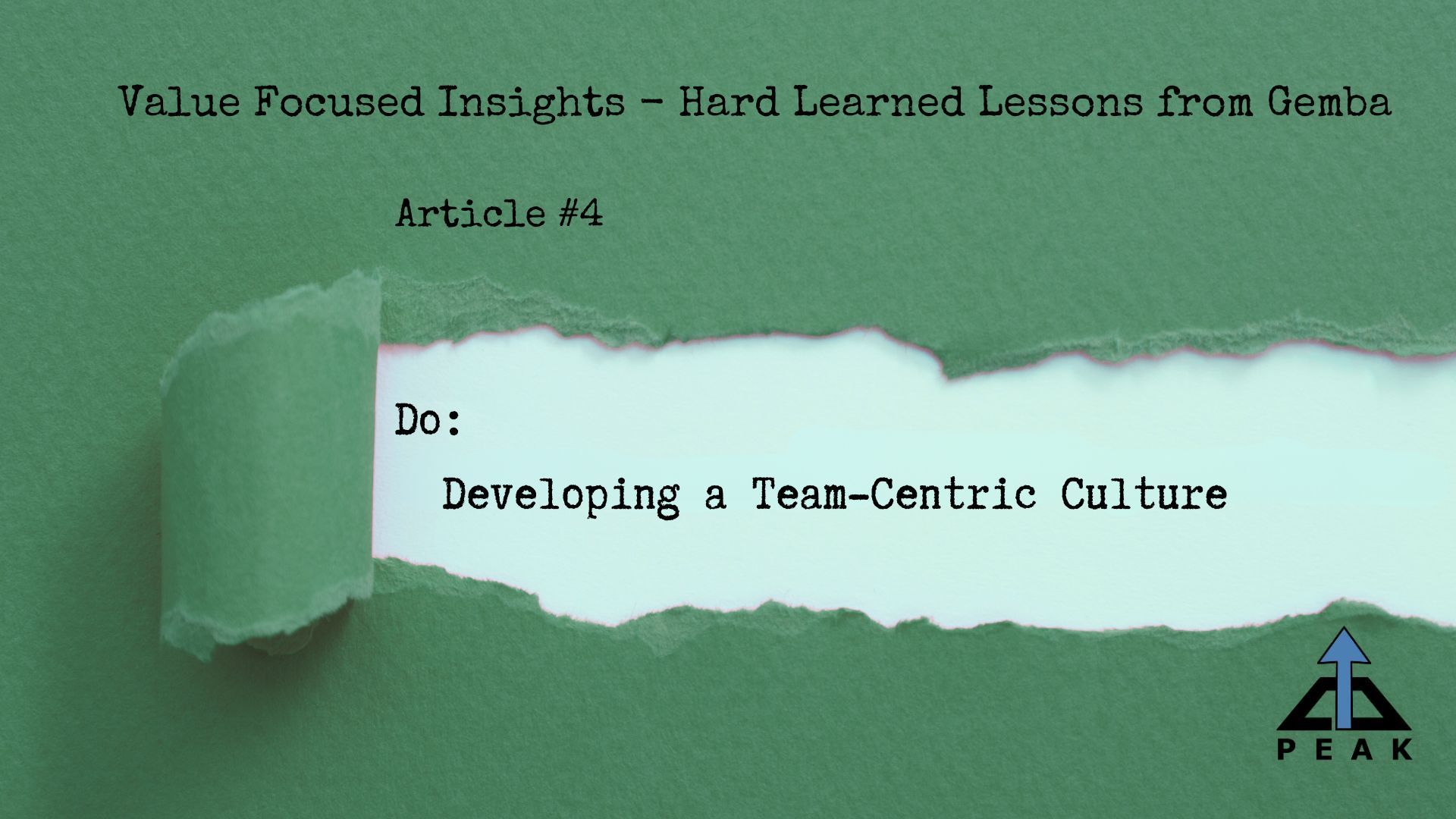Conclusion of Embracing Slower Times: Building Resiliency for Long-term Success
Annah Godwin
Over the last few months, Tim Upchurch and I have shared blogs that we hoped would help you understand that slowdowns in your business are opportunities to drive improvements, so you not only weather the storm but emerge faster, more agile, with higher quality, and lower cost. Remember, while it may seem sensible to immediately cut expenses such as excess labor, overtime, major repairs, and delay capital expansions, this short-term strategy can cost your business in the long run by alienating your customers. You may struggle to meet the new lower levels of demand for several key reasons including absenteeism, time to backfill, and fear of layoffs.

Over the last few months, Tim Upchurch and I have shared blogs that we hoped would help you understand that slowdowns in your business are opportunities to drive improvements, so you not only weather the storm but emerge faster, more agile, with higher quality, and lower cost. Remember, while it may seem sensible to immediately cut expenses such as excess labor, overtime, major repairs, and delay capital expansions, this short-term strategy can cost your business in the long run by alienating your customers. You may struggle to meet the new lower levels of demand for several key reasons including absenteeism, time to backfill, and fear of layoffs.
At Peak Productivity, our perspective holds true for times of great demand or low demand and include
· Value is always king.
· Build resilience for all business environments.
· Continuously strive to improve your Value/Cost ratio. If demand is high, focus on delivering value and if demand is low, focus more on harvesting value.
In our blogs, we enjoyed discussing tips, insights, and recommendations on various lean and continuous improvement tools to deploy. When applied correctly they will drive needed improvements and lead to the future growth of your business.
Here’s a quick recap of each tool we highlighted with a short summary. You can find all these blogs on @Peak Productivity LinkedIn page.
1. How to Run at Lower Demand – When your demand for goods or services slows there are a few key points to think about. How do you protect the customer to make sure that you still meet their necessary demands and specifications? Are you running limited lines at the standard rate instead of running all lines below the standard rate? Are you leveraging your excess production lines or personnel to support improvement initiatives? These key points will help sustain your organization during lower times of demand.
2. 5S and Workplace Organizations-Deploy this tool when you want a low-cost implementation that is easy to teach and provides quick results. It is also a great tool to start on a lean journey because it is straightforward to apply and allows you to build and test your sustainment plan. The hardest parts of 5S are overcoming sustainment issues and potential negative impact on the short-term bottom line.
3. Right-Sized Problem-Solving Tools – You can define a problem as the difference between what is expected and what occurs. A process can be seen as a hypothesis - when you execute it, you have an expected outcome. If the results are expected, then there is no problem, however, if the results are different than expected, then there is a problem or opportunity for improvement. Some examples of problem-solving methods include TPM or Reliability Efforts, Quality and Defect reduction, Lean and Six Sigma Initiatives, and Safety Upgrades.
4. Standardized Work – This tool allows an organization to establish the least wasteful way of completing the process steps while meeting the customer’s demand. You can develop standard work by going to the gemba, calculating takt time and inventory levels, creating a rough draft of the work sequence, performing time studies, and reviewing and posting the results with team members.
5. Power of Leader Standard Work in Driving Stability and Continuous Improvement - In organizations where processes lack control, life is a never-ending cycle of firefighting. Leaders and teams find themselves consumed by addressing one crisis after another, leaving little time for proactive or improvement work. This constant state of reaction hampers productivity, innovation, and overall efficiency. Leader Standard Work is not a one-time checklist; it embodies continuous improvement principles. Every week, leaders should reflect on their LSW, assessing what’s working well and what can be improved. Three fundamental functions on the foundation of effective management are process stability, process improvement, and engagement.
6. Value Stream Exercises – Time and resource availability hurdles often slow the rate of implementation, meaning that slower times are the perfect opportunity to review, update, and improve your value stream map. Understanding your processes and the steps you can take to make them quicker, safer, and easier with higher quality, more communication, and better visuals should excite all team members.
7. Unleashing Efficiency through Total Productive Maintenance (TPM) – TPM starts with calculations of OEE and TAU to help you access your current level of efficiency. Using the different factors in the calculation you can determine which of the six losses is creating the greatest hindrance to your equipment’s effectiveness. The six losses include equipment breakdowns, setup, and adjustment losses, idling and minor stoppages, reducing speed losses, defect and rework, and start-up and yield losses. Once the losses are identified work may begin by improving safety, quality, productivity, and maintenance of the equipment and the products it makes.
8. Single-Minute Exchange of Die – Focus on SMED activities so a changeover can occur more often, thus producing a mix of product outputs that better align with your customer’s need. SMED activities will also reduce downtime on your machinery, improve quality, and improve visual management.
9. Daily Management Systems and the 10 Key Points to Lift the Fog and Discover Value – The 10 key points are:
1) The true value proposition for a DMS is to achieve predictable outcomes over time.
2) The primary goal of DMS is to achieve the target today.
3) Focus on “RED” and recover to standard condition.
4) Always go to the gemba to Understand the current condition and facts are found at gemba. DMS only deals in facts.
5) Use an accountability process to prevent cost creep.
6) Use metrics to identify improvement opportunities.
7) Use statistics to make decisions.
8) Focus on your KIV’s to achieve your KOV’s.
9) Referees drive compliance with rules.
10) Use impartial and experienced coaches to connect the dots.
10. Visual Controls - They should provide immediate information on the current condition, highlight a problem, create a basis for improvement, and keep management alert to deviations from the standard. Some examples of visual controls are andons, floor markings, kamishbai board, color coding, safety signs, checklist, and one-point lessons to name a few.
11. Rebuilding Quality Tools and Standards – Having quality tools and standards in place is critical to maintain and even drive future improvement within processes. There are six actions you can take to improve your quality quickly. Implement quality circles, develop visual tools and samples, perform source inspections, create poka-yoke for your processes and parts, focus on visual signals and controls, and challenge your conventional wisdom and assumptions.
12. Building Teams - Building and managing teams is not always easy but you should always incorporate other people in the process of improvement. Some quick ways to begin building teams are spending time in the gemba, cross-training team members, performing a job swap, or having an interdepartmental team-building activity.
13. Defect Reduction to Reverse the Narrative – Reducing defects will reduce cost and improve lead time to your customers. There are seven steps to help reduce or eliminate defects in your processes.
1) Validate your quality systems are intact.
2) Validate your process is being followed.
3) Review your process for variation and sources of hard work.
4) Understand your process capability and control.
5) Generate statistics about your defects.
6) Not all defects are financially equal.
7) Solve to root cause for sources of variation.
We hope you found the information within this series helpful and inspiring. Although the title of the series is Embracing Slower Times: Building Resiliency for Long-Term Success, you don’t have to wait until demand slows to embrace and deploy these lean concepts and tools. Any improvements made today will help build success for tomorrow. Go out and see what processes are having the most issues and cross-check those issues against the lean tool set. You will probably find at least one tool, that if deployed immediately, would help make that process safer, more efficient, less costly, with higher quality. All those improvements will lead to a happier customer experience.
Peaks and Valleys.....












